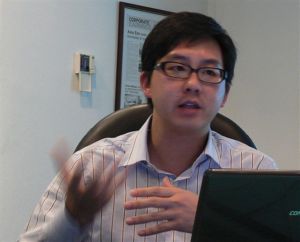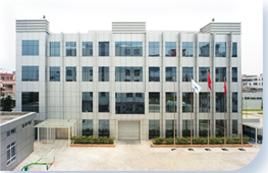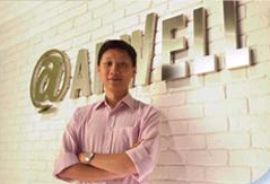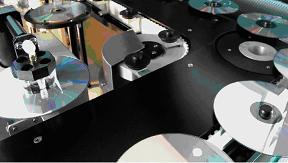ANWELL TECHNOLOGIES, which has just reported a second successive quarter of profits, says its production capacity will be stretched till early next year.
The demand for its equipment for manufacturing optical discs, such as DVDRs, is spiking up with positive implications for its profit margins.
Says Mr Ken Wu, an executive director of Anwell: “I can see that there is still room for an increase in margins for the rest of the year and the start of 2008 because of this imbalance between supply and demand.”

The industry is recovering after two years – 2005 through to late 2006 – of being in the doldrums when clients – that is, the optical disc manufacturers - were faced with an oversupply of discs and declining profit margins.
DVDR demand never stopped rising, and gradually profit margins for manufacturers recovered. As a result, disc manufacturers began looking to upgrade to new equipment, benefiting equipment makers such as Anwell, the No. 2 largest in the world.
“We are now at the start of an upcycle,” says Ken, 37, during a briefing for analysts after the release of the first-half results, the highlights of which are:
* Gross profit margins increased from 7.4% in 1H06 to 19.5% in 1H07.
* Net profit improved from a loss of HK$30.4 million to a gain of HK$2.7 million.
* Revenue soared 539% from HK$38.9 million to HK$248.3 million.
Anwell has benefited from the exit of some competitors from the industry in the face of high costs in regions such as Europe. Anwell has penetrated new geographical markets where DVDR is a relatively new product and where demand for equipment to manufacture DVDRs is spiking up.
South America – in particular Brazil and Argentina – accounted for 54% of Anwell’s sales in the first half of this year. There, the market demand has only just begun to shift from CD-R to DVDR.
This year, Anwell achieved its initial breakthrough in India, which accounted for 2% of Anwell sales in the first half. The sales were for “pre-recorded” equipment, which is equipment for manufacturing discs with content such as movies and games.
The Indian buyer could turn out to be a major customer in future. “India is a very big market for movies. More movies are produced there than any other country in the world,” notes Ken.

Going forward, Anwell expects to complete its acquisition of three optical disc manufacturers in September, subject to shareholders' approval at an upcoming EGM. This vertical integration will have positive synergies, says Ken.
Aside from recordable and pre-recorded business segments, Anwell has been developing a new business, the OLED business. It is set to take off with initial sales expected in 2008, says Ken. OLED will increasingly become an alternative to LCD screens for electronic gadgets, he adds. OLED is brighter, lighter and consumes less energy.
Anwell plans to produce OLED manufacturing equipment in low-cost China to beat its competitors who are mostly operating out of Japan.
“Our prospects for this business will be very good in the next few years. In addition, the profit margin for OLED manufacturing equipment is much higher than for optical disc manufacturing equipment,” says Ken.
The down cycle will come again for the disc equipment sector but with OLED and the relatively more stable disc-making business, Anwell is well placed to handle the challenge in a few years’ time, says Ken.

Q Can equipment for manufacturing single-layer DVDR be upgraded to make dual-layer DVD-R?
A A lot of equipment can be upgraded or modified, but there is a monetary cost. And the efficiency of the machine will not be as good compared to a new machine. It’s a problem we will not face when we enter the disc manufacturing business. A few years later, we can upgrade our machines at a much lower cost and with improved technologies. We will be in a very competitive position.
Q For the recordable sector, you will be selling to the competitors of the three companies that you are going to acquire?
A Yes, Anwell will be selling to these competitors around the world and even to disc manufacturers in China. You may wonder why they would still buy equipment from us. The answer is we have the best manufacturing solution for them, and the best after-sales support. Moreover, the global optical disc market is so huge that the disc manufacturers can find room to grow, provided they have cost and technology advantages.
Q In the first half, how much did Umedisc (one of the three disc manufacturers to be acquired) contribute to Anwell’s sales?
A Less than 10%. After the acquisition, sales from Anwell to Umedisc become inter-company sales so they will be eliminated from the Group’s consolidated financial statements.
Q Where do you see Anwell in five or 10 years’ time?
A We target to become the biggest in the optical disc equipment industry within five years.
Q Why did these customers buy from Anwell?
A Besides good equipment, they need suppliers to work with them to improve the design of the machines. In after-sales support, we are much better than our competitors. Part of the reason is our lower cost of engineering staff compared to our European competitors'.
Q I can see from the financial statement that your inventory is about HK$176 million at the end of June ….
A More than half of that are finished goods. They will become revenue in the coming quarters.

A They cost from HK$2.5 million to HK$14 million.
Q The convertible notes (issued by Pacific Capital Investment Management)…it doesn’t matter if the share price is high or low?
A At the end of each quarter, if there are outstanding notes, we will have to make a fair value judgement on them and that will have an impact on the bottomline. The fair value of the convertible notes will also depend on the share price.
Q In the past, you made the bulk of your sales and profits in Q4. Will we see this surge in Q4 this year?
A In 2003 and 2004, we concentrated on a single product – the DVD-R - and we focused on China and HK. It’s a pattern for the customers in that region to buy in the second half of the year. But now we have a wider range of products and a global market, so the seasonal effect will not be as strong as before.
Q For the OLED business, what is the start-up cost?
A We are now spending about HK$500,000 each month on overheads and R&D. When we have orders in hand, we will put in more resources and incur higher expenses.







